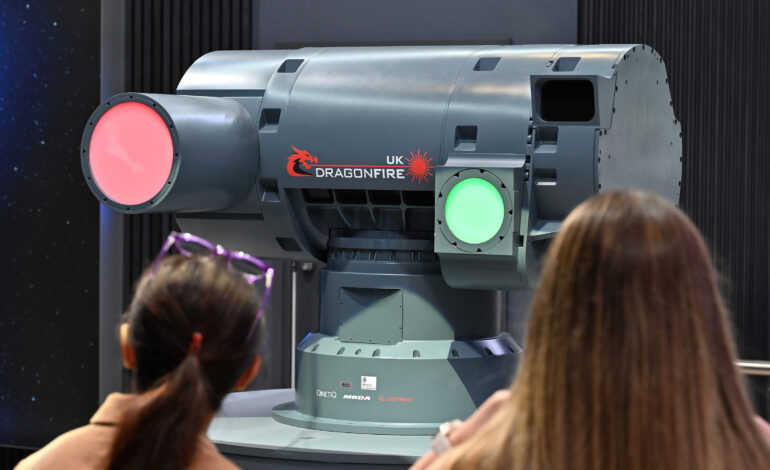British Military Demonstrates Advanced Laser to Neutralize Drones

The British Armed Forces have recently showcased a significant advancement in anti-drone technology by successfully deploying a powerful laser system to neutralize flying threats. The demonstration of the DragonFire laser took place at a military facility in Scotland, where it effectively targeted and shot down high-speed drones capable of reaching speeds up to 650 km/h (approximately 404 mph). This speed is double that of a Formula 1 race car, underscoring the system’s capabilities.
The laser technology, developed by the European defense firm MDBA, was highlighted in a video released by the UK Defense Journal. The footage illustrated the laser’s deployment aboard Royal Navy ships, emphasizing its potential to counter threats from hostile drones. The system demonstrated remarkable accuracy, reportedly capable of hitting a £1 coin from a distance of one kilometer.
The British Ministry of Defense has recognized the effectiveness of the DragonFire laser, awarding MDBA a contract valued at £316 million to produce and deliver the system for use on Royal Navy vessels by 2027. This initiative aligns with the growing global interest in anti-drone technologies, as military operations increasingly face the challenges posed by inexpensive and versatile drone warfare.
In terms of operational costs, the DragonFire laser presents a significant financial advantage. It costs approximately $13 to fire a beam, in stark contrast to traditional missile systems, which can exceed $2.1 million per launch. This cost efficiency is particularly relevant in light of recent challenges faced by the US Navy in the Red Sea, where the military has expended nearly $1 billion on missiles to combat drone threats from Houthi rebels in Yemen.
The increasing prevalence of drones in military operations has prompted a reevaluation of defense strategies. The ongoing conflict in Ukraine has further accelerated the adoption of drones, complicating the security landscape for many nations. Traditional countermeasures, such as net guns, have been employed by soldiers in the field, but the introduction of high-powered lasers like the DragonFire could represent a pivotal shift in drone defense capabilities.
Advancements in laser technology have transformed these systems into reliable and robust tools suitable for battlefield application. While earlier iterations of combat lasers struggled with reliability, recent engineering improvements have led to more powerful and effective devices. As military forces worldwide grapple with the evolving landscape of drone warfare, innovations like the DragonFire laser could play a crucial role in shaping future defense strategies.
The development of the DragonFire laser is part of a broader trend among world militaries to enhance their capabilities against aerial threats, ensuring that they remain prepared to address the challenges posed by modern warfare. As nations invest in advanced defense technologies, the British military’s initiative sets a notable example in the ongoing effort to secure airspace against drone incursions.






